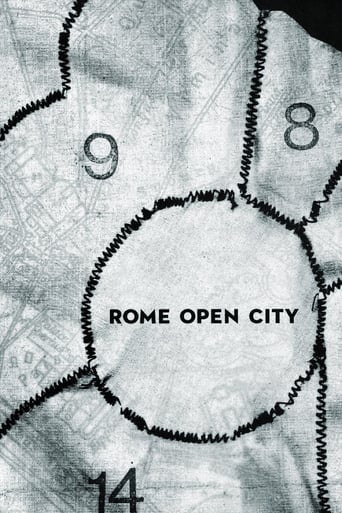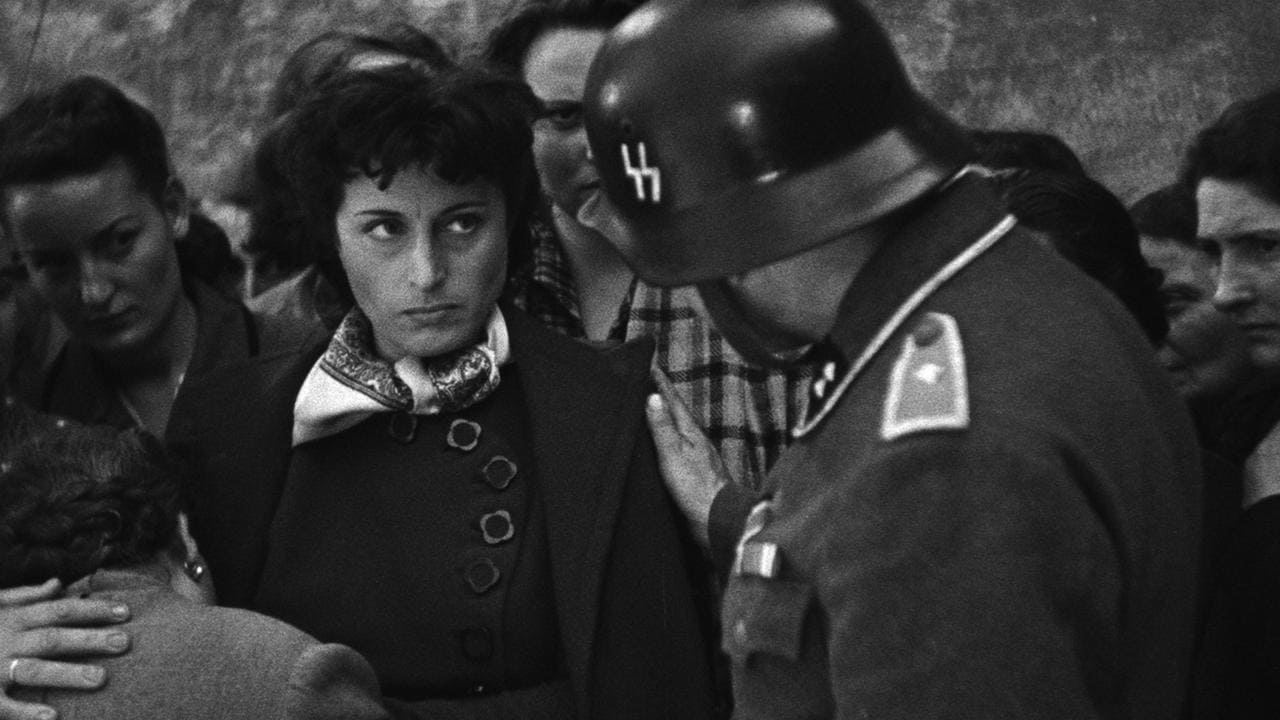Johnny H.
Rome, Open City, or simply Open City, came out at a rather troubling time in Italy's history. The country couldn't afford modest-budget stories, so locals made films from scraps of film-stocks, cameras and on-location shooting with avant-garde filmmaking techniques that changed the future of European and international cinema.Open City has scenes of people getting shot, scenes of torture, and an execution of a Priest. It's very upsetting stuff for 1940s filmmaking, especially considering American films like Bonnie and Clyde wouldn't push the boundaries of cinematic content for another two decades to come.Open City is a very grounded, cutty, visceral and believable story that came from a rather depressing time in human history. It's worth a shot quite easily.
elvircorhodzic
ROME, OPEN CITY is a very dramatic thriller about the resistance. Directed us to a superior, honest and realistic way shows human force in the fight for freedom. There is no doubt that this is one of the best films about the Second World War.The film was made in extremely difficult conditions, because at that time Italian cinema did not exist. However, open scenery is great. The streets, buildings and apartments perfectly fit into the atmosphere. Given the fact that this is a modest set, this is admirable.It is obvious that the emotions of the film under the influence of the then events. Love is strong, but in this context there is no room for weakness. Determination wins over hysteria. Evil is furious and cruel, but at the same time it is powerless. The struggle for freedom is exalted. However, the protagonists in this film do not have such a feeling. They simply do what they thought was right.The story is certainly based on real facts. Details are uncompromising, honest and shocking. The main participants were brutally killed. The woman for love, underground agent for secrets and priest because of faith in the good.Aldo Fabrizi as don Pietro Pellegrini is brilliant in the role of the priest who leads the dignity of man in front of the church and God. Marcello Pagliero as Giorgio Manfredi, alias Luigi Ferraris is very good in the role of leader of the resistance. Anna Magnani as Pina is humble and sincere woman who pay their love with death. Harry Feist as Major Bergmann is elegant, arrogant and spoiled. The villain in the true sense of the word.Rome, Open City is a real experience in every sense and return of neo-realism to the film scene.
james higgins
96/100. To fully appreciate this film, it should be researched, focusing on how it was made and the history behind it. It's an incredible movie. The cast is amazing, the realistic viewpoint is fresh even today, and was an amazing concept at that time. Superb and gritty photography, the story is an unforgettable one, and it is all brought together by the genius Roberto Rossellini. It is so visually impressive. Historically such an important film in cinema, and it never fails to impress and fascinate. It is astounding how Rossellini manages bits of humor amidst extreme war conditions. There are so many images that you think about long after watching the film.
Ilpo Hirvonen
After WWII filmmakers tried to find their ways to deal with history. A British director Humphrey Jennings made evocative documentaries about WWII and Americans made more romantic features about the war from their perspective. Here Italy comes in. The nation which had just got away from the chains of fascist management. Today this postwar Italian movement is known as neorealism, which is recognized from its reportage-like characterization, national personal gallery and dramatization of the resistance. But it cannot only be described by these external aesthetic features. The starting points in Italian neorealism were in the anti-fascist battle and the Italian liberalization.The people who formed neorealism, Vittorio De Sica, Luchino Visconti, Roberto Rosselini and many others, wanted to bring Italy back to the midst of other nations. They wanted to find their own way of dealing with the history. Narratively the way was the documentary, reportage-like characterization. The shady cinematography combined with the daring description of Italians. Even today Open City is praised as the symbol of the resistance and the picture of the character played by Anna Magnani was actually published in a stamp after 50 years in Italy. Her character became the symbol of the resistance.Film historians often tend to argue, who actually started neorealism. In 1943 Luchino Visconti directed Ossessione, which at least aesthetically looks like the work of a neorealist. Which probably is true, but neorealism is seen as a postwar genre and since the WWII ended in 1945, the statement that Ossessione would've began the movement is weak. But it most certainly did give it a start and the ingredients. Some also state that De Sica's Bicycle Thieves (1948) is the greatest film of neorealism. I think that Bicycle Thieves is a masterpiece, but when defining what neorealism actually is Rosselini's reportage-like characterization works better than De Sica's lyricism. Open City is the first film, which finely defined neorealism.Open City is perhaps the most personal film by Rosselini. It was written under the watchful eyes of the fascist management, where the risk of getting arrested was always near. This made Rosselini and the other screenwriter Sergio Amidei feel like they were a part of the resistance - what would be greater than to write your own page to history? When young Federico Fellini (today the most famous of the team) joined the crew, they started to film it with an incredibly low budget. Roberto Rosselini has said: "Open City achieved more than all the efforts of the Italian Foreign Ministry put together. It helped Italy to find its own place among other nations." Rome Open City is a picture of its own time, it's a landmark in the history of cinema. In both the WWII genre and in Italian neorealism, which influenced the Japanese postwar cinema (Kurosawa, Ichikawa) and the Nouvelle Vague - French New Wave (Godard, Truffaut, Rivette, Chabrol & Rohmer). It's a cry for democracy and freedom. It is a hopeful picture of Italy free from the chains of the fascists. It meant a totally new way of dealing with the history. Open City was a very ambitious film, but it succeed in all of its intentions. It is still a timeless masterpiece.


 AD
AD







